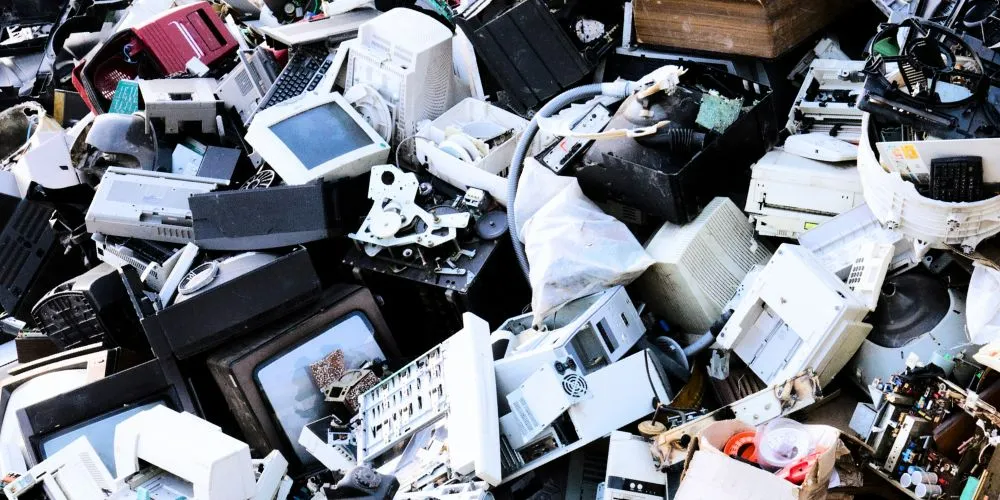The rapid advancement of technology has led to shorter lifecycles for electronic devices, resulting in a significant increase in electronic waste (e-waste). As computers, smartphones, and other digital devices become obsolete, managing their disposal and recycling is a growing global concern. Improper handling of e-waste can lead to environmental hazards and health risks, making efficient recycling methods essential for sustainability. This article explores the fundamentals of e-waste, its environmental impact, challenges in recycling, and future trends in managing obsolete computer hardware.
Understanding E-Waste
E-waste refers to discarded electronic devices, including computers, laptops, mobile phones, printers, and other digital equipment. These devices contain valuable materials, such as metals and plastics, but also hazardous substances that require careful handling.
Components of E-Waste
E-waste consists of various components, each with different disposal and recycling needs:
- Metals: Circuit boards and connectors contain precious metals such as gold, silver, and palladium. Other metals, including aluminum and copper, are used in wiring and casings.
- Plastics: Many electronic devices contain plastic components, contributing to landfill waste if not properly recycled.
- Glass: Older computer monitors and television screens contain leaded glass, which is hazardous if disposed of improperly.
- Hazardous Substances: E-waste contains toxic materials such as mercury, lead, cadmium, and brominated flame retardants, which can pollute the environment if incorrectly handled.
The Growing E-Waste Problem
Electronic consumption has led to an unprecedented rise in e-waste generation. According to reports from global environmental agencies, millions of tons of waste are generated annually, with only a fraction being properly recycled. Many obsolete computers and electronic devices end up in landfills or are illegally exported to developing countries, where unsafe recycling practices pose risks to human health and the environment.
The Environmental Impact of E-Waste
Improper electronic waste disposal contributes to severe environmental problems, affecting air, water, and soil quality. Recycling and responsible disposal are critical to minimizing these negative effects.
Soil and Water Contamination
E-waste contains hazardous chemicals that can leach into the soil and groundwater when disposed of in landfills. Lead from circuit boards, cadmium from batteries, and mercury from LCD screens can contaminate drinking water sources, posing serious health risks to humans and wildlife.
Air Pollution from E-Waste Burning
In some regions, waste is burned to extract valuable metals such as copper and gold. This process releases toxic fumes into the air, including dioxins and heavy metals. Prolonged exposure to these pollutants can lead to respiratory diseases and other health complications.
Energy Waste and Resource Depletion
Discarding electronic devices instead of recycling them contributes to unnecessary energy consumption. Manufacturing new devices requires extracting raw materials such as rare earth metals, which are limited in supply. Recycling e-waste helps recover these valuable resources, reducing the need for new mining operations and lowering environmental impact.
Challenges in E-Waste Recycling
Despite its benefits, waste recycling faces several challenges, including improper disposal practices, lack of awareness, and limited infrastructure.
Inefficient Recycling Systems
Many regions lack proper e-waste recycling facilities, leading to the accumulation of electronic waste in landfills. Informal recycling methods, such as manual dismantling and acid stripping, are hazardous and inefficient. Establishing advanced recycling plants with automated processes is essential for effective waste management.
Illegal E-Waste Export
A significant portion of waste from developed countries is illegally shipped to developing nations, where it is processed in unsafe conditions. Workers in these countries often handle toxic substances without protective equipment, leading to serious health risks. Strict international regulations and enforcement are needed to prevent illegal e-waste dumping.
Public Awareness and Participation
Many consumers are unaware of proper e-waste disposal methods. Old computers and electronic devices often end up in household trash instead of being sent to recycling centers. Increasing public awareness through educational campaigns and convenient recycling programs can encourage responsible waste management.
Solutions for Managing Obsolete Computer Hardware
Governments, businesses, and individuals must adopt sustainable solutions to address the growing e-waste problem. Implementing responsible recycling practices and promoting circular economy models can reduce environmental impact and maximize resource recovery.
E-Waste Recycling Programs
Governments and environmental organizations have introduced waste recycling programs to facilitate proper disposal. Collection points, drop-off centers, and manufacturer take-back programs allow consumers to responsibly dispose of their old electronics. These programs ensure that devices are dismantled and processed using environmentally friendly methods.
Refurbishing and Reuse Initiatives
Many discarded computers and electronic devices are still functional and can be refurbished for extended use. Charities and non-profit organizations often collect used hardware, repair it, and donate it to schools, low-income families, or developing communities. Extending the life cycle of electronics reduces waste and benefits those in need.
Sustainable Product Design
Manufacturers are adopting eco-friendly designs that prioritize recyclability and energy efficiency. Modular devices with easily replaceable parts help extend product lifespan, reducing the frequency of disposal. Additionally, using biodegradable materials and reducing toxic components can make electronic waste safer.
Government Regulations and Policies
Governments worldwide are implementing policies to regulate e-waste management. Extended Producer Responsibility (EPR) laws require manufacturers to take responsibility for their products’ entire lifecycle, including recycling and disposal. Stricter regulations on electronic exports also help prevent the illegal dumping of waste in developing countries.
Future Trends in E-Waste Management
As technology continues to advance, innovative solutions for e-waste management are emerging. New trends in recycling and sustainable electronics aim to reduce waste and improve resource recovery.
Advanced Recycling Technologies
Emerging recycling technologies, such as automated sorting systems and chemical recovery processes, improve the efficiency of waste processing. Innovations in robotics and AI-powered sorting enable faster and more precise material separation, maximizing the recovery of valuable metals.
Circular Economy in Electronics
The shift toward a circular economy encourages manufacturers to design sustainable products. Instead of following a linear “produce-use-dispose” model, companies are adopting closed-loop systems where electronic components are reused, repaired, and recycled. This approach minimizes waste generation and conserves natural resources.
Biodegradable and Sustainable Electronics
Researchers are exploring the development of biodegradable electronic components made from organic materials. Biodegradable circuit boards and eco-friendly packaging can significantly reduce electronic waste in the future. These innovations contribute to a greener technology industry while maintaining device performance.
Blockchain for E-Waste Tracking
Blockchain technology is being introduced to enhance transparency in e-waste recycling. Secure and traceable digital records can track the movement of discarded electronics, ensuring responsible recycling and preventing illegal dumping. This technology also helps verify compliance with environmental regulations.
Conclusion
E-waste management is a critical issue in today’s digital age, requiring collective efforts from individuals, businesses, and governments. The improper disposal of obsolete computer hardware contributes to environmental pollution, resource depletion, and health risks. However, sustainable solutions can be implemented with effective recycling programs, responsible manufacturing, and increased public awareness.
Future advancements in recycling technology, circular economy models, and government policies will play a key role in reducing the environmental impact of electronic waste. By adopting responsible e-waste management practices, we can create a more sustainable future while efficiently using valuable electronic resources.









